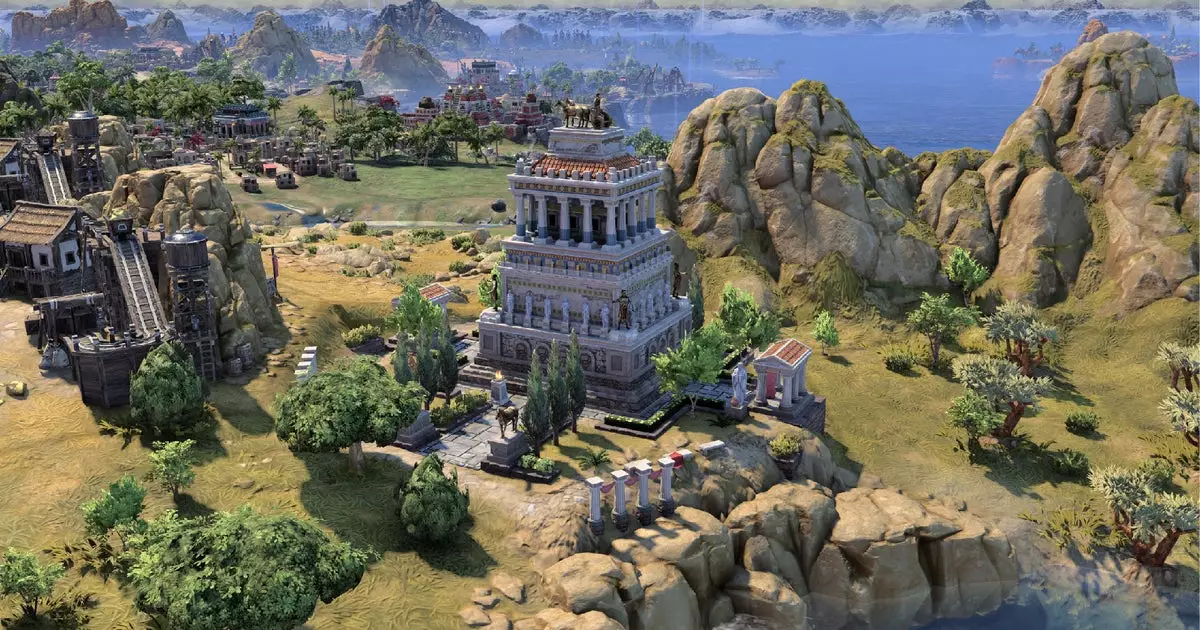In the realm of grand strategy gaming, few titles command as much devotion and scrutiny as Civilization VI. Yet, behind every compelling update lies a story of challenge and transformation. The recent 1.2.4 patch epitomizes this dynamic, reflecting both the technological intricacies of game development and the strategic depth that gamers crave. While updates often aim to refine gameplay, they also introduce unforeseen hurdles—particularly when they recalibrate core systems like user interface mechanics. The crucial question is: does such upheaval serve the long-term health of the game or undermine the community’s trust?
Firaxis’s approach with 1.2.4 demonstrates a bold willingness to innovate at the expense of short-term stability. Transitioning to a new UI framework was undoubtedly necessary for future improvements, but the immediate consequence was a wave of mod disruptions. This reveals a fundamental tension in game development: balancing progress with preservation. While developers seek to modernize and optimize, they must also consider the ecosystem that players have invested in for years. The community’s frustrations, especially regarding the breaking of beloved mods, are not merely temporary inconveniences—they highlight how intertwined player creativity is with the core experience of a strategy game of this caliber.
It’s commendable that Firaxis offered a rollback option, underpinning their acknowledgment of the patch’s rough edges. However, this also exposes a broader philosophical dilemma: should developers prioritize robust core functionality or innovation at all costs? The answer may lie somewhere in the middle but leaning towards mindful pacing. As with any complex system, incremental updates combined with clear communication foster a healthier relationship between creators and consumers.
Redefining Balance and Strategy in a Changing Landscape
The tweaks in the latest update extend beyond mere technical considerations—they directly influence the strategic fabric of the game. Wonder placement, civic branch shifts, and territorial limitations alter the delicate calculus players weigh during each turn. For example, shifting Erdene Zuu’s availability influences early-game cultural strategies, while resource placement in pyramids affects location-based planning in diverse terrains. These seemingly minor adjustments ripple through the gameplay, challenging players to rethink their tactics and long-term plans.
Moreover, the nerfing and buffing of iconic wonders like the Gate of All Nations and the Eiffel Tower indicate an ongoing struggle to fine-tune the game’s balance. Developers aim to curb overpowered early-game routes while nurturing opportunities for diverse victory paths. This balancing act reveals that victory isn’t solely about accruing points but mastering how game mechanics—like influence and alliances—interact with each wonder’s unique properties.
The nuanced changes to age transitions, especially concerning affinity and influence continuity, underscore a critical insight: victory is increasingly determined by strategic adaptability. When alliances carry over, players are encouraged to develop more sustainable, long-term diplomatic strategies instead of relying on quick wins. The game’s evolution pushes players to think more holistically, considering not just immediate gains but also the ripples their choices produce through successive ages.
Artificial Intelligence and Community Engagement: Keys to Longevity
While game mechanics and balance tweaks are vital, the evolution of AI opponents signals another frontier—one that could define the game’s staying power. Improvements aimed at making AI less unpredictable and more competitive suggest Firaxis recognizes that challenging opponents foster engagement and satisfaction. Players invest their time and skills into outsmarting increasingly formidable foes, which sustains interest beyond initial novelty.
Furthermore, the developers’ efforts to improve interface responsiveness once again highlight the importance of accessibility. Simple quality-of-life enhancements, often overlooked, can dramatically alter a player’s experience—making complex decisions less cumbersome and more intuitive. As strategy games grow richer and more intricate, meticulous attention to interface design elevates the entire experience, enabling players to focus on mastery rather than frustration.
Crucially, community input remains at the heart of this evolution. Firaxis’s transparent acknowledgment of mod disruptions and their plans to stabilize modding support demonstrates a recognition that players are co-creators of the game’s destiny. Such openness builds trust and ensures that updates are seen as part of an ongoing dialogue rather than unilateral change. This process is vital if the game is to remain vibrant in a landscape saturated with evolving competitors.
Ultimately, the trajectory of Civilization VI—embodied in updates like 1.2.4—reflects a broader truth about strategy gaming: growth demands both ingenuity and humility. Striking the right balance between innovation and stability, challenge and accessibility, is an art form that will determine whether players view the game as a fleeting novelty or a timeless classic. As developers continue to refine their craft, players must also adapt, viewing each update as an opportunity to deepen their mastery of a complex, ever-changing digital universe.

